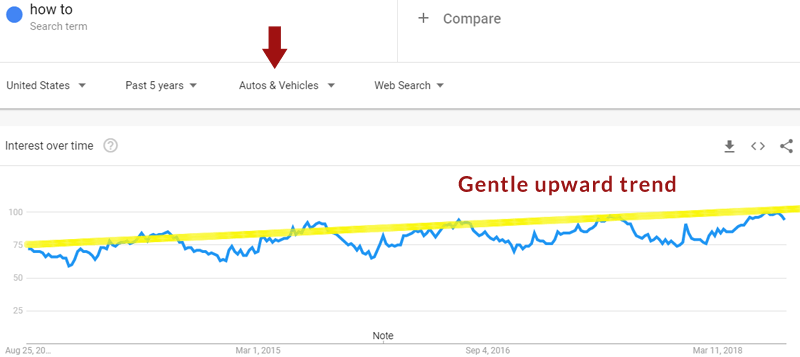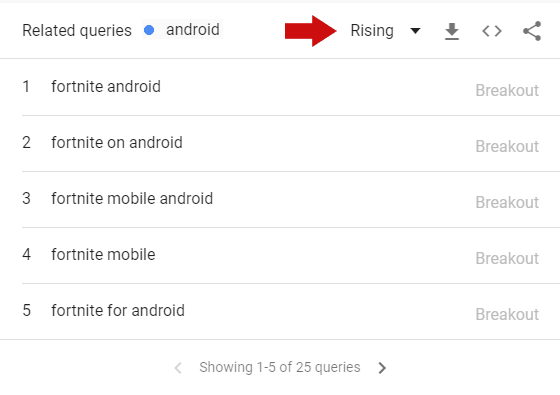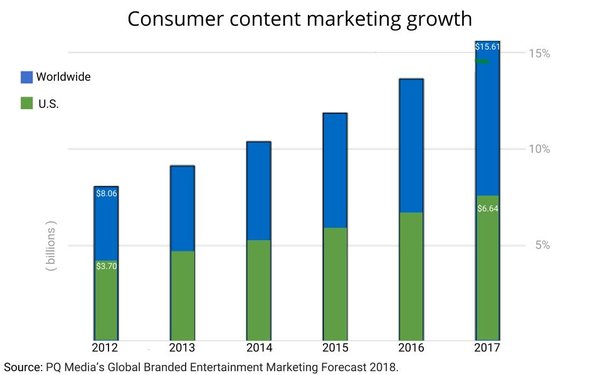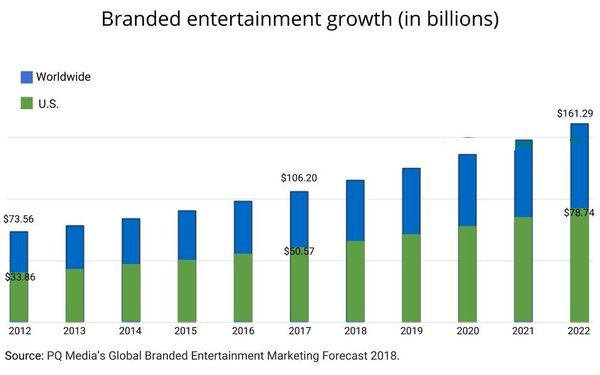By Ben Jacobson
Your audience’s favorite platforms and content formats are continuously changing, with micro-this and in-depth that. Influencer marketing is taking over more and more each year, and you can’t keep track of how you’re supposed to be doing it.
And don’t even think about organic social media reach — trying to achieve that often means facing a bottomless pit of theories, advice, and case studies.
My point is that content marketing moves fast.
How can you stay up to date on our industry when books, training, and even the blog posts on Google’s page one become outdated so quickly?
Look to the experts.
Industry influencers will always be talking about what’s happening in content marketing, on social media, the conference circuit, and their own platforms. Plus, you can simply observe what they’re doing and how they’re reacting to industry changes inside of their own businesses.
Here are 17 thought leaders worthy of your attention, so you can keep your content marketing strategy fresh and effective.
Shane Barker, Digital Strategist, Shane Barker Consulting

Content marketer, e-commerce expert and influencer marketing consultant Shane Barker has always worked on the big online marketing strategies confusing businesses most.
He’s specialized in digital reputation management, social media, and influencer marketing, always an early adopter. And when it comes to influencer marketing strategy, he’s diving in deep at the moment.
On his blog, he breaks down topics like influencer relationship management, going beyond surface tactics like sending pitches and ways to get noticed to teaching marketers how to build strong long-term relationships.
Elsewhere, you can find him partnering with some of the most helpful marketing brands, like SEMrush and Bitly, on content helping their own audiences with influencer success.
Follow @Shane_Barker on Twitter
Read Shane on Search Engine Journal
Brittany Berger, Content Strategist

Brittany Berger creates content for SaaS companies and entrepreneurs, but unlike other content experts, she wants you to create less content.
Berger teaches how to repurpose existing content instead of writing from scratch every time.
Berger’s YouTube channel is full of jokes and high energy, and her guest content on other marketing blogs brings the same personality-filled advice on content marketing.
Follow @ThatBBerg on Twitter
Lilach Bullock, Founder, Lilach Bullock Limited

If you have trouble tying content to measurable results in your business, you need Lilach Bullock.
She is all about using content to generate leads that convert and uses a number of ways to help you do so.
Beyond her services as a consultant, Bullock offers coaching, speaks at conferences frequently, and has a premium membership group which marketers and business owners can join at any time to start learning together.
Follow @LilachBullock on Twitter
Gini Dietrich, CEO, Arment Dietrich

Gini Dietrich is one of the first experts you think of when considering the intersection of PR and marketing/digital media. She is the CEO of Arment Dietrich and also runs the Spin Sucks blog and Slack community for modern PR pros.
In addition to her frequent online educational content, she also publishes fun features like Gin and Topics roundups and will be one of the more refreshing and engaging speakers at your favorite marketing conferences.
Follow @GiniDietrich on Twitter
Barry Feldman, Owner, Feldman Creative

Barry Feldman of Feldman Creative has been an industry expert in social media and digital marketing for decades.
SaaS companies can improve their content marketing strategies by following his blog, his guest posts, or his Content Matters podcast with Orbit Media’s Andy Crestodina.
All marketers and entrepreneurs should consider his latest book, “The Road to Recognition”, a must-read. It’s full of lessons on building your personal brand and establishing expertise on behalf of yourself or your company.
Follow @FeldmanCreative on Twitter
Ann Handley, Chief Content Officer, MarketingProfs

This digital marketing pioneer and best-selling author can likely be found speaking at your favorite marketing events this year (or any year). You’ll definitely want her insights on empowering ridiculously good marketing, always delivered with good cheer.
Follow her now so you don’t miss any of MarketingProfs’s co-sponsored research with Content Marketing Institute, such as B2B Content Marketing Benchmarks, Budgets, and Trends.
She also just launched a new email newsletter called Annarchy, which she promises to fill with writing advice and “high-spirited shenanigans.”
Follow @MarketingProfs on Twitter
Louis Grenier, Content Lead, Hotjar

Louis Grenier helps SaaS companies with marketing in multiple ways, but there’s one thing they all have in common. He helps uncover truths in marketing, as ugly as they may be.
In his role as content lead at Hotjar, he creates amazing resources around the truth in data, analytics, and feedback. This take on best practices is definitely worth a read.
He also runs the Everyone Hates Marketers podcast, where he addresses all the BS in the industry with experts like Seth Godin, Oli Gardner, and Noah Kagan.
Follow @LouisSlices on Twitter
Benji Hyam, Co-founder, Grow & Convert

Benji Hyam is building his agency Grow & Convert with thoughtful transparency that serves as its own lesson in entrepreneurship.
He and co-founder Devesh Khanal have been documenting their strategies and pivots while growing a blog, launching an online course, and finding the best fits as a fast-growth agency.
In addition to learning from Grow & Convert’s journey itself, you’ll also want to read all the success stories they publish on their clients and other businesses trying their content promotion and marketing strategies.
Follow @BenjiHyam on Twitter
Larry Kim, Founder, MobileMonkey

Founder of the PPC software company WordStream and now Facebook Messenger marketing platform MobileMonkey, you can find and learn from Kim’s advice about anything business in his prolific columns on Inc, Medium, and elsewhere. He publishes content daily about business, technology, and entrepreneurship.
Not sure how Messenger marketing fits into the future of your own strategy? Kim is doling out free tips about this constantly, as he’s currently in the midst of a multi-month marathon of webinars, Twitter chats, and more to help marketers make the most of this channel.
Follow @LarryKim on Twitter
Read Larry on Search Engine Journal
Arnie Kuenn, CEO, Vertical Measures

Arnie Kuenn is the CEO of Vertical Measures, a top digital marketing agency that also offers training and resources for other marketers.
He’s also written a great book on integrating multiple marketing channels, “Accelerate“, which is a guide to combining search, social, and content.
You’re most likely to interact with him at a marketing conference, where he continues to teach the best ways to balance and integrate paid and organic tactics.
Follow @ArnieK on Twitter
Jason Miller, Head of Content and Social Media Marketing, LinkedIn Sales & Marketing Solutions EMEA

With extensive experience in multiple areas of marketing, Jason Miller can help you with your entire inbound funnel.
In his bestselling book, “Welcome to the Funnel“, he covers how to pair social and content.
As a highly requested speaker, these days you can learn from him at one of your favorite marketing conferences. Be sure to try and find all the rock music references in his presentations – or his book, for that matter.
Follow @JasonMillerCA on Twitter
Julia McCoy, Founder, Express Writers

A prolific writer and serial entrepreneur, Julia McCoy has scaled her content agency Express Writers to nearly 100 writers.
With so much marketing power on the Express Writers team, they’re able to produce tons of valuable resources for content marketers: frequent blog posts, a podcast, and the lively #ContentWritingChat Twitter chat.
In addition to the agency’s services and free resources, McCoy has also written two books on content strategy and offers a six-week course on mastering practical content marketing skills that will get your strategy into shape quickly.
Follow @JuliaEMcCoy on Twitter
Read Julia on Search Engine Journal
Sujan Patel, Co-founder, Web Profits

Sujan Patel does everything, from creating content constantly to running an agency and growing multiple SaaS companies to jumping out of planes.
Aside from his actual advice and content about marketing, the SaaS teams he advises have built products that empower marketers and make their jobs easier, like Mailshake, LinkTexting, and Quuu.
Start following him by catching up on his blog, trying one of the tools he partners with, or binge-watching a playlist of his marketing advice on YouTube.
Follow @SujanPatel on Twitter
Shayla Price, B2B Marketer

Shayla Price is an ecommerce and SaaS expert whose content marketing work you’ve seen in Leadpages, Kissmetrics, and Shopify Plus. You can also read her work in publications like Inc. and Entrepreneur.
In addition to reading her advice on social media, email, and content strategy, watch what she’s doing with her own work for new ideas, such as creating helpful audio notes using Anchor.
Follow @ShaylaPrice on Twitter
Joe Pulizzi, Founder, Content Marketing Institute

Joe Pulizzi is one of the content marketing leaders you can thank for its popularity today. As the founder of Content Marketing Institute and author of content marketing handbooks such as “Content Inc.” and most recently, “Killing Marketing”, he’s had quite a bit of influence on the industry.
In 2017, he left Content Marketing Institute to focus more on his nonprofit organization The Orange Effect Foundation, but you can still catch him speaking at Content Marketing World to absorb some of his wisdom.
Follow @JoePulizzi on Twitter
Jason Quey, Founder, Growth Ramp

Jason Quey helps entrepreneurs and startups get marketing right, whether that’s with influencer marketing or content promotion.
Previously VP of Marketing and Operations at Codeless Interactive, Quey now focuses on his own SaaS product, Growth Ramp, which is currently in pre-launch beta, loaded with features to help marketers save time on content promotion.
Follow Quey to watch how he helps his customers and clients and to get motivated by his expert roundups, looking at how your other favorite marketers do things.
Follow @JDQuey on Twitter
Joanna Wiebe, Creator/Co-founder, Copy Hackers/Airstory

Joanna Wiebe is the master of SaaS copywriting and go-to for conversion-optimized content. The collection of in-depth Copy Hackers resources is practically its own free startup marketing curriculum – not to mention Wiebe’s content on other websites, so you’ve likely gotten her help with something before.
Take some time to brush up on your copy skills in her free Conversion Copywriting 101 course, or just watch her next Tutorial Tuesday. Each and every Tuesday, Wiebe spends her lunch hour offering tons of free copywriting help through the weekly webinar series, often bringing on co-hosts from other companies for even more expertise.
Follow @CopyHackers on Twitter
Stay Fresh with a Follow
These experts represent all areas of content marketing, all working with different types of businesses and clients in different ways.
By reading their writing, following them, and watching how they use content in their businesses, you’ll be able to easily stay inspired and strategic in equal measure.
More Content Marketing Resources:








































